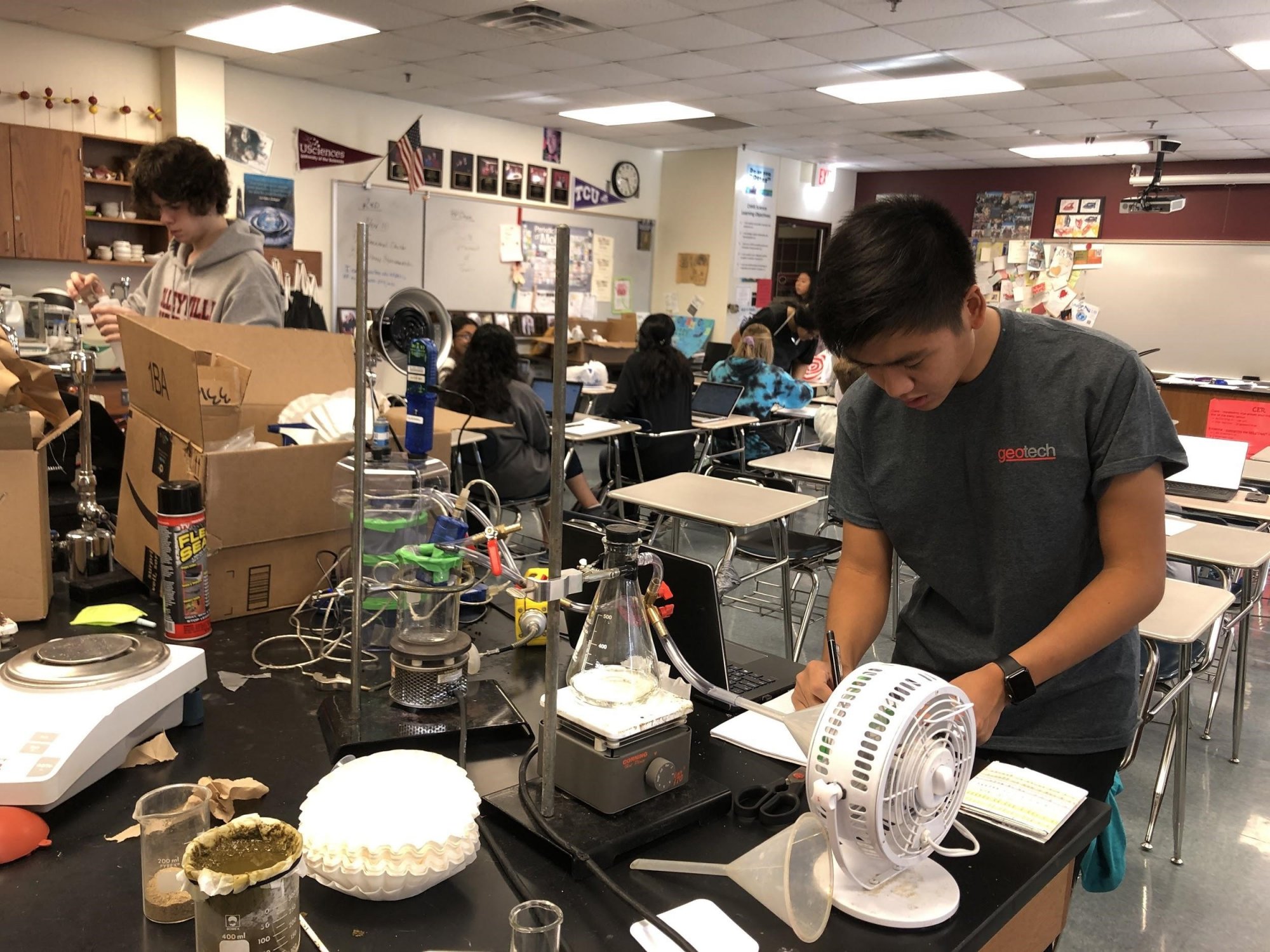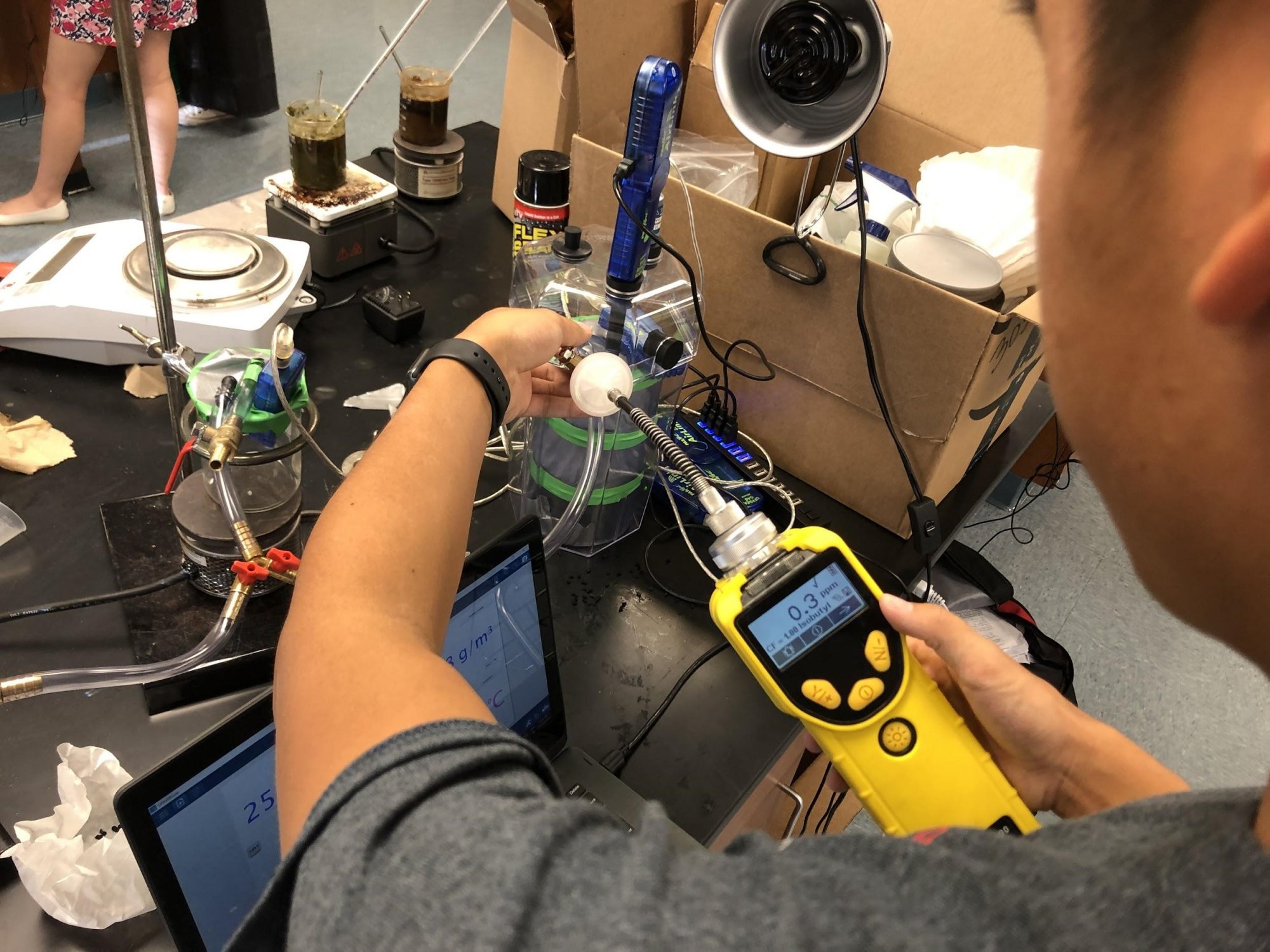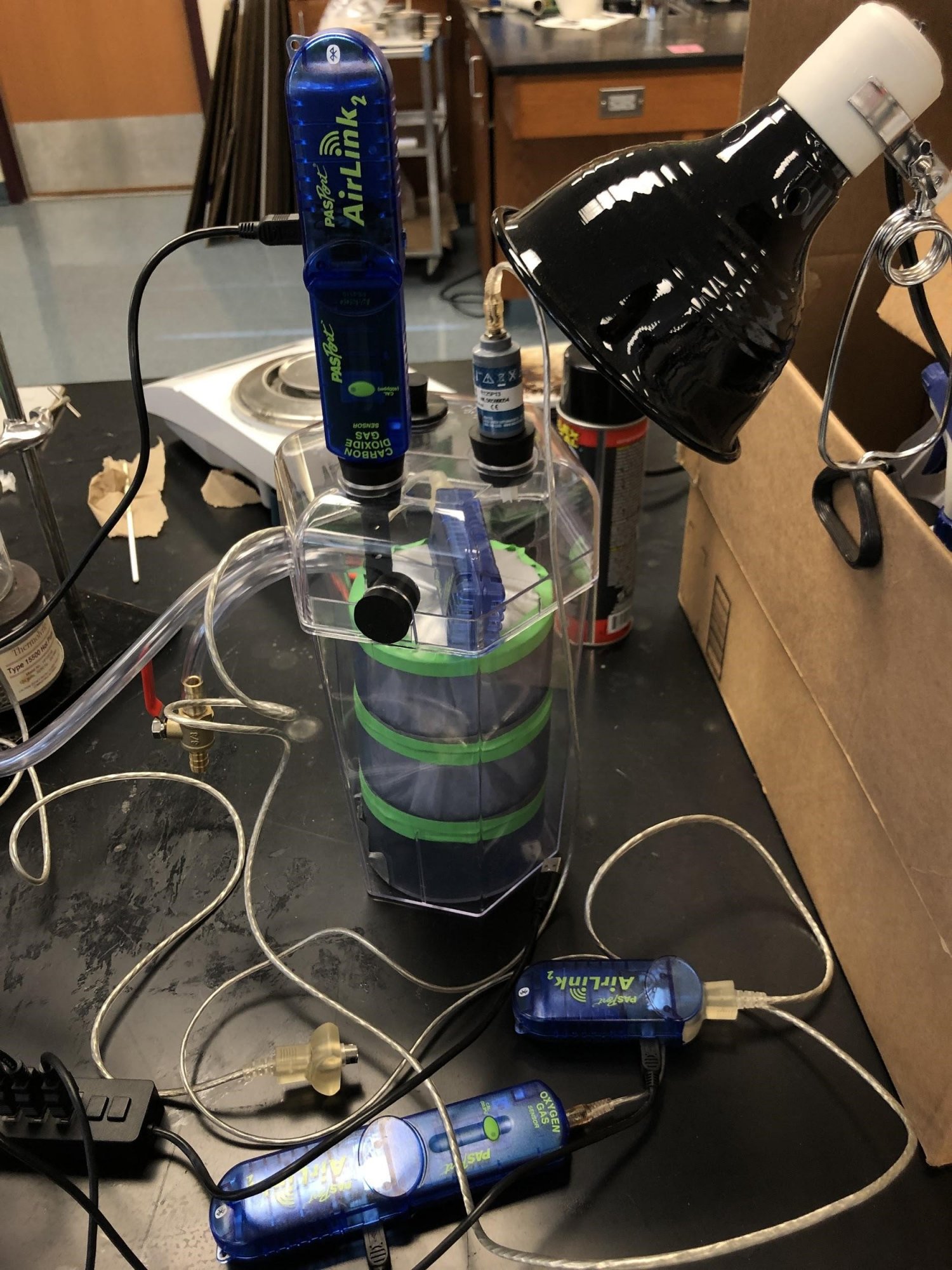Texas Student Instruments Science Fair Experiment with PASCO Sensors
Jonathan Shyu - Student at Colleyville Heritage High School, TX
Currently, more than 95% of the human population breathes in harmful, polluted air. A part of this contaminated air is composed of substances known as Volatile Organic Compounds (VOCs). In addition to irritating the eyes, nose, and throat, these pollutants are found to cause nausea, cancer, and severe damage to the central nervous system. Surprisingly, VOCs come from commonly found items including car emissions, fuels, cleaning supplies, building materials, and even commonplace printing machines. Modern technology has developed machines to filter out these pollutants; however, the machines are very expensive, and other more affordable filters are much less effective.

My name is Jonathan Shyu, and I am a student attending Colleyville Heritage High School. For my Advanced Chemistry Research and Design course, I created a biofilter, which is an air filter that uses bacteria in a preprepared compost to process harmful VOCs. I’ve also created a study on the Optimal Parameters of a Biofilter, in which I conducted experiments to determine the best environmental conditions for the most efficient filtration rate. For this, I used a variety of sensors (including PASCO’s Oxygen and Carbon Dioxide sensor), AirLinks, a homemade biofilter, a heat lamp, a humidifier, and Acetone (to simulate atmospheric VOCs). For each test, I ran my biofilter with two varying parameters: temperature and humidity. Both parameters were regulated inside of PASCO’s EcoChamber. Each set of parameters was tested five times to maximize data accuracy. For my study, I tested temperatures from 25°C (room temperature) to 37°C, and humidity from 50% to 100%. After all parameters were set in place, a fan was turned on to transfer Acetone vapor through the filter. I used a Photoionization Detector to measure the concentration of Acetone before and after filtration.

Following all experimentation, I concluded that running the biofilter at 30°C and in 90-93% humidity was the most optimal environment to allow for maximum efficacy. These conditions resulted in an approximately 98% filtration rate. Additionally, this was a small biofilter, so, theoretically, if its size were larger, it is likely that it could filter more gas at an even faster rate. Not only was the biofilter effective in removing one of the most noxious forms of air pollutants, but it was also quite inexpensive. The small-scale biofilter I used to conduct my experiments cost under $50 to construct. With help from PASCO, generously providing a surplus of sensors and equipment, I was able to keep my experimentation well under my school’s budget, allowing me to conclude my experimentation and advance to the Fort Worth Regional Science fair competition.





